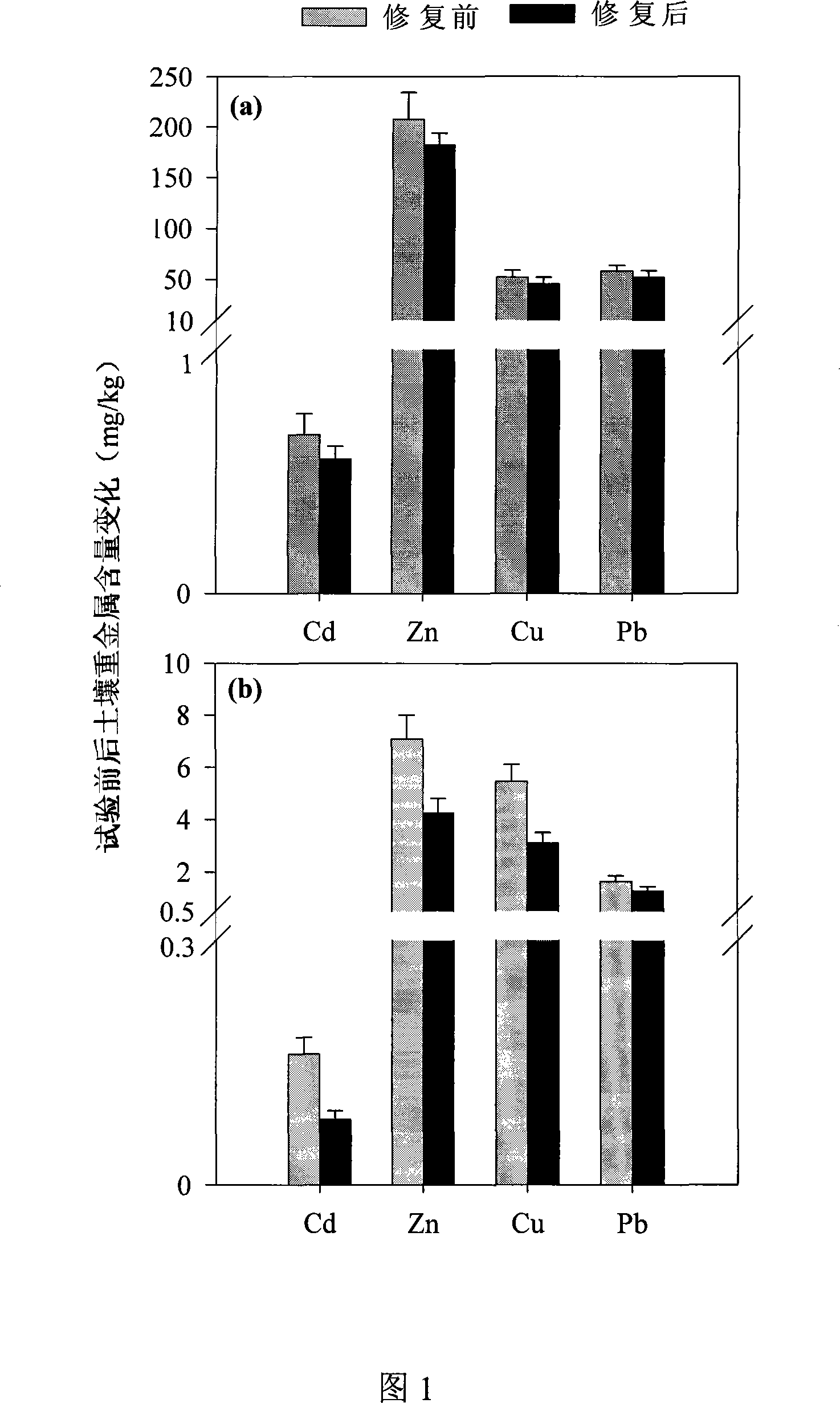Method for producing and restoring vegetables growing in the heavy metal mildly-polluted soil
A repair method and heavy metal technology, applied in the restoration of contaminated soil, fertilization methods, botanical equipment and methods, etc., can solve problems affecting agricultural production and farmers' income, and achieve the goal of not destroying soil physical and chemical properties, ensuring safety, and operating simple effect
- Summary
- Abstract
- Description
- Claims
- Application Information
AI Technical Summary
Problems solved by technology
Method used
Image
Examples
Embodiment Construction
[0018] The following examples will further illustrate the feasibility and positive effects of the method of the present invention.
[0019] A two-year restoration test was carried out in Wangxin Horticultural Farm, Jiading District, Shanghai. The heavy metal content in the soil of the horticultural field generally exceeds the standard, which belongs to moderately and lightly polluted soil. They are 0.16mg / kg, 7.08mg / kg, 5.45mg / kg and 1.64mg / kg respectively. The experiment began in March 2005, and the compound fertilizer (N:P 2 o 5 : K 2 O=15:15:15) 20kg, commercial organic fertilizer 500kg, applied with base fertilizer. In one restoration cycle, Sedum sedum was harvested 4 times with a dry matter yield of 448kg / 667m 2 , the cadmium content in the aboveground part is 22.6mg / kg, the zinc content is 5680.2mg / kg, and the lead content is 94.6mg / kg, and the cadmium, zinc and lead taken away from the soil are 10.0g / 667m 2 、2009.5g / 667m 2 and 42.1g / 667m 2 . Harvesting 1 time ...
PUM
 Login to View More
Login to View More Abstract
Description
Claims
Application Information
 Login to View More
Login to View More - R&D
- Intellectual Property
- Life Sciences
- Materials
- Tech Scout
- Unparalleled Data Quality
- Higher Quality Content
- 60% Fewer Hallucinations
Browse by: Latest US Patents, China's latest patents, Technical Efficacy Thesaurus, Application Domain, Technology Topic, Popular Technical Reports.
© 2025 PatSnap. All rights reserved.Legal|Privacy policy|Modern Slavery Act Transparency Statement|Sitemap|About US| Contact US: help@patsnap.com

